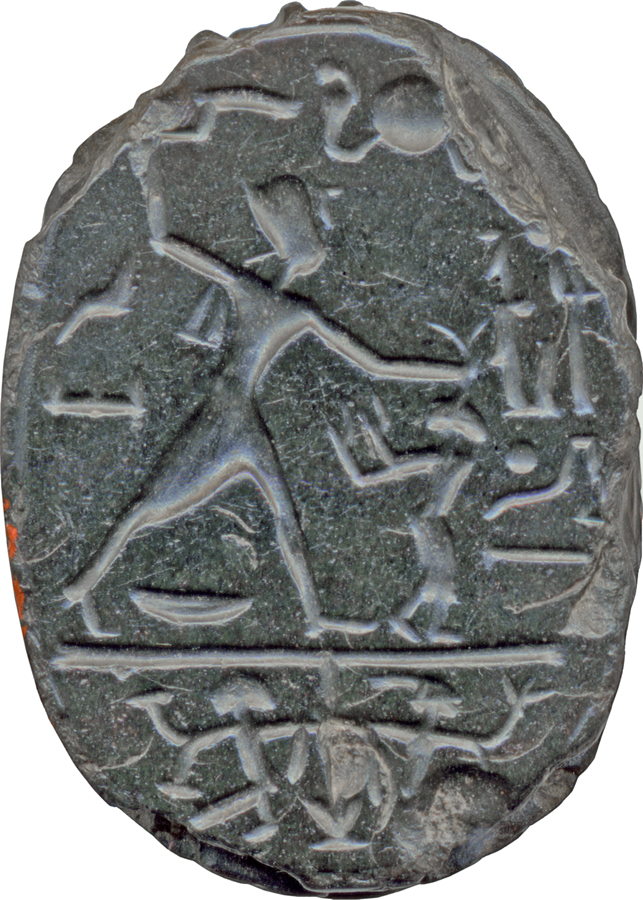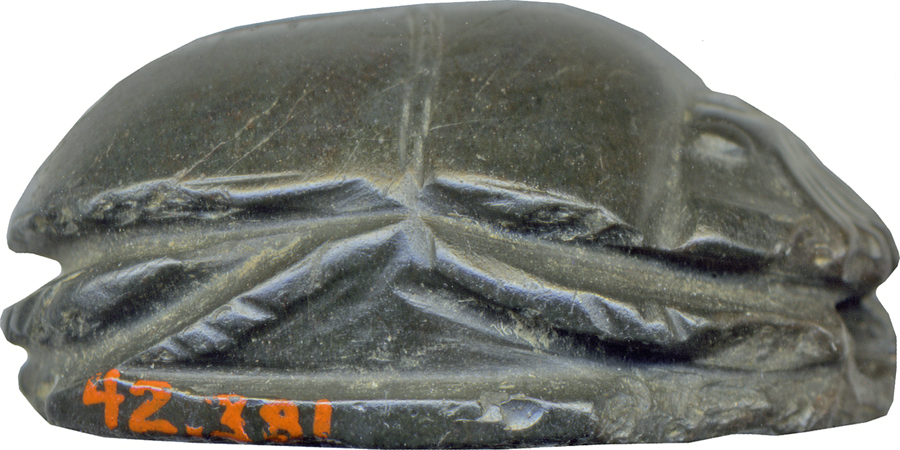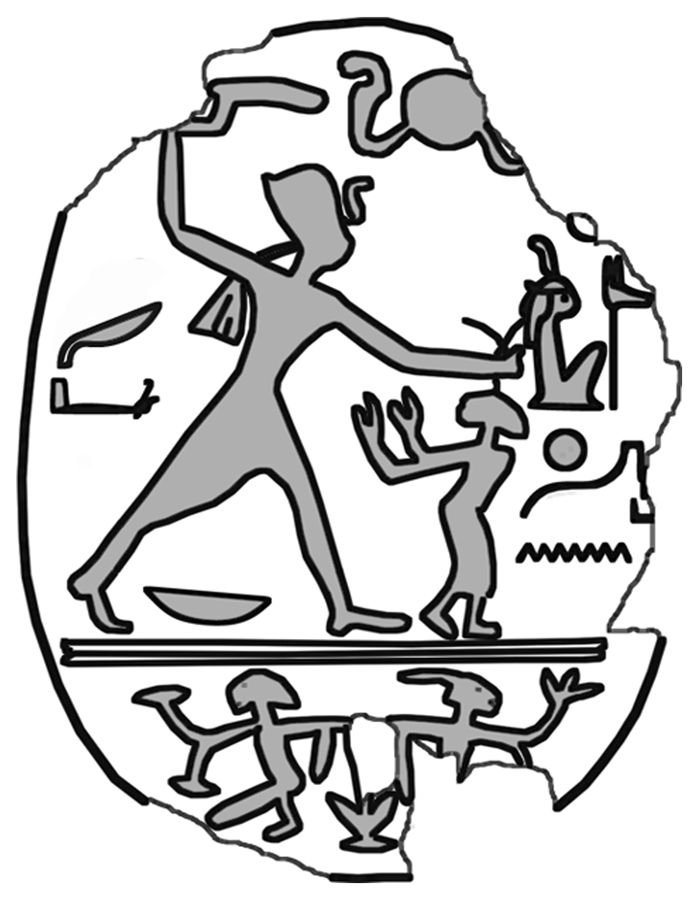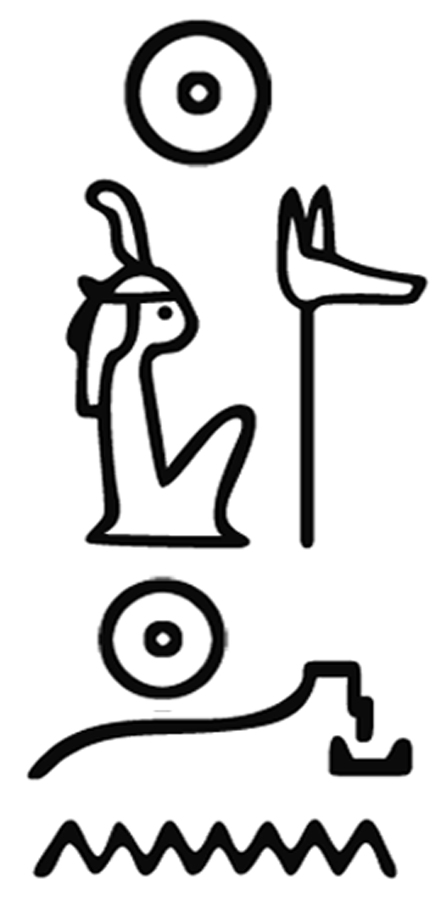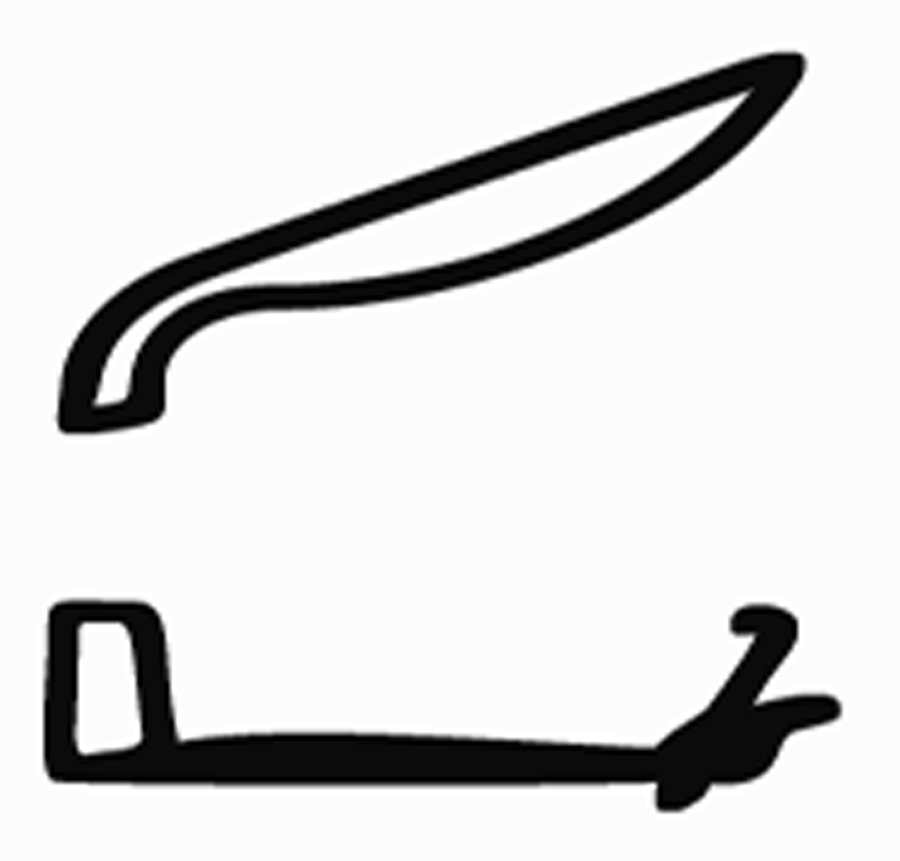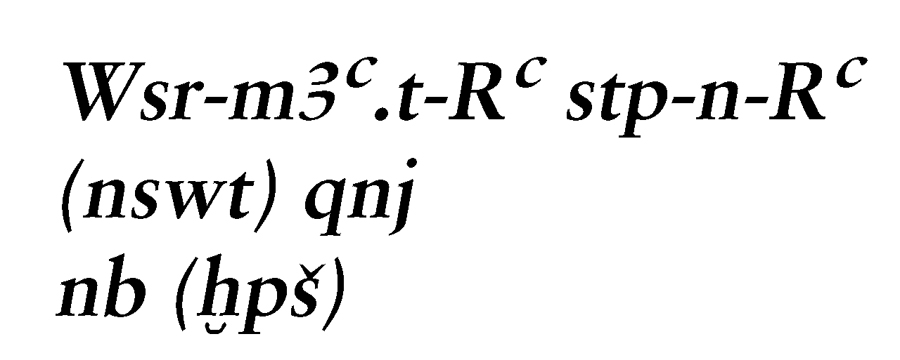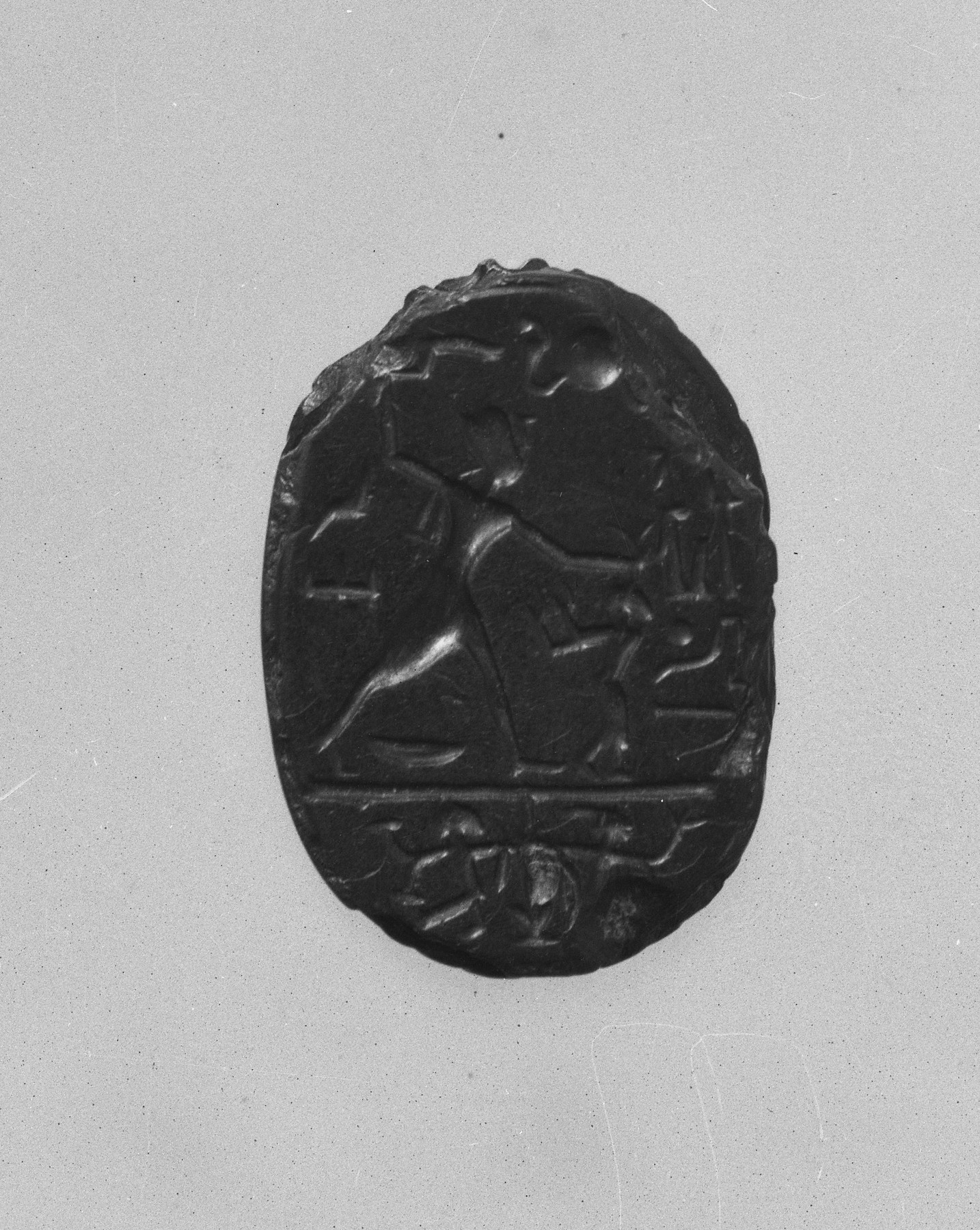Scarab with a King Holding a Captive
(Ancient Egypt and Nubia )
The ancient Egyptians believed that the dung beetle, the Scarabaeus sacer, was one of the manifestations of the sun god. Representations of these beetles were used as amulets, and for ritual or administrative purposes.
The bottom of this scarab displays a motif, which shows King Ramesses II smiting an enemy. The king grabs the captive with one hand by his hair, and swings back his sickle-sword with the other. The vehemence of the movement is supported by his striding posture having the front foot on the ground, but the heal of the back foot lifted. The captive's lower body faces to the right, his head and raised arms turned towards the king in a capitulation gesture. Ramesses II wears a knee length kilt and the so-called "Blue crown" with Uraeus-serpent and long crown sash; a sun disc flanked by two Uraei (cobras) is above his head. It is notable that the sword and the sun disk appear together in the top of the text field. The captive is dressed in a calf length kilt and has a Nubian hairstyle. The lower round, below a horizontal scene divider, displays the unification icon with papyrus and lotus plants combined with two kneeling, fettered captives: a Nubian (left) and a Libyan with a feather in his hair (right). The inscription in front of the king contains his throne name, behind his back is an epithet, and between his legs an nb-basket. The figure of the king dominates the upper register by its size and movement - conveying victorious power. The turned position of the captive with raised arms, the slightly bent upper body, and the small step with one raised foot demonstrates insecurity. The arrangement of the hieroglyphs, as well as the baseline with the unification icon below, creates a frame, which conveys a solar, earthly, and royal dimension.
The back of the scarab is flat, and pronotum (dorsal plate of the prothorax) its highest point. Pronotum and elytron (wing cases) have double separation lines. The head section consists of a semicircular head flanked by quarter-spherical eyes, trapezoidal side plates, and a four times serrated clypeus (front plate). The slender extremities have natural form, with some diagonal hatch lines on the ends of the legs for the tibial teeth and pilosity (hair). The oval base is symmetrical.
The scarab is longitudinally pierced, was originally mounted or threaded, and functioned as an amulet. It should secure the presence and victorious power of the king, and provides a private owner with his royal patronage and protection. The high quality of the piece makes it likely that it was produced and used in the royal court. One can speculate if such scarabs were distributed to high officials, especially in the military.
The motif of the unification icon with fettered captives appears also on a scarab in the Pushkin Museum (no. 2338), displaying Ramesses II seated on a Sed-festival throne or litter accompanied by Month and Seth; the name of Ramesses is also written without cartouche. It is likely that both scarabs belong to a series.
Inscription
Provenance
Provenance (from the French provenir, 'to come from/forth') is the chronology of the ownership, custody, or location of a historical object. Learn more about provenance at the Walters.
Henry Walters, Baltimore, [date and mode of acquisition unknown]; Walters Art Museum, 1931, by bequest.
Geographies
Egypt (Place of Origin)
Measurements
H: 9/16 x W: 13/16 x L: 1 1/8 in. (1.4 x 2 x 2.8 cm)
Credit Line
Acquired by Henry Walters
Location in Museum
Accession Number
In libraries, galleries, museums, and archives, an accession number is a unique identifier assigned to each object in the collection.
In libraries, galleries, museums, and archives, an accession number is a unique identifier assigned to each object in the collection.
42.381

